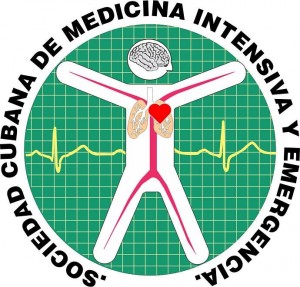APACHE II como índice predictor de mortalidad en pacientes neuroquirúrgicos no traumáticos en UCI / APACHE II as mortality forecaster index in neurosurgical non traumatic patients in an ICU
Palabras clave:
APACHE II, Mortalidad, Neuroquirúrgicos, No traumáticos, Unidades de cuidados intensivos / APACHE II, Mortality, Neurosurgical, Non traumatic, Intensive critical careResumen
Introducción: la supervivencia o la muerte de los pacientes en una unidad de cuidados intensivos (UCI) dependen del equilibrio dinámico entre la magnitud de la enfermedad y la suficiencia de las respuestas fisiológicas protectoras. El tratamiento neurointensivo, la neuromonitorización y el empleo de scores pronósticos en los pacientes neurocríticos permiten no solo seguir su evolución, sino predecir su pronóstico.
Objetivo: correlacionar el score APACHE II con el estado al egreso de los pacientes neuroquirúrgicos no traumáticos ingresados en la unidad de cuidados intensivos del Hospital Universitario “General Calixto García” de La Habana.
Método: se realizó un estudio prospectivo, descriptivo y transversal, en el período comprendido desde enero del 2012 hasta diciembre del 2012, con un universo y muestra de 55 pacientes a los cuales se les aplicó el score pronóstico APACHE II durante su evolución en UCI.
Resultados: predominio del sexo masculino, edad promedio de 51.8 ± 14.5 años. La población femenina fue la más joven del estudio, presentando a su vez mayor mortalidad.
Conclusiones: el score APACHE II en su menor puntuación y los bajos porcentajes del índice de mortalidad predicha (IMP) y el índice de mortalidad predicha ajustado (IMPA) caracterizaron a los pacientes egresados vivos, mientras que las puntuaciones más altas del APACHE II, y los altos porcentajes del IMP y el IMPA, fueron predictores de mortalidad en la muestra estudiada.
Abstract
Introduction: In the intensive care units both survival and death depend of the dynamic balance between the magnitude of the disease and the sufficiency of the physiological patronizing replies. The neurointensive treatment, the neurological monitoring and the score prognoses used in critical patients, permit not only continuing the development and destiny, but also announce the prognosis.
Objective: to associate APACHE II score with the concluding state of neurosurgical non traumatic patients in an intensive care unit (ICU).
Methods: a prospective, descriptive and transversal trial was realized at the ¨General Calixto García¨ Teaching Hospital, between January 2012 and December 2012. The universe and sample was 55 neurosurgical non traumatic patients admitted in the ICU in who was used the APACHE II score as forecaster index.
Results: this research showed masculine sex prevalence, the age average was 51.8 ± 14.5 years. The female population was younger but presented a higher mortality.
Conclusions: the minor punctuation APACHE II score, the low percent of the predict mortality index (PIM) and adjusted predict mortality index (APMI) qualified to patients alive, and higher punctuations of APACHE II score, higher percent of PIM and the APMI, predicted the mortality in the studied sample.
Descargas
Citas
1- Bone RC, Fisher CJ, Clemmer TP, Sloman GJ, Metz CA. Sepsis syndrome: a valid clinic an entity. Crit Care Med 1994; 17: 189-93.
2- López Águila SC, Iraola Ferrer D, Álvarez Li FC, Dávila Cabo de Villa E, Álvarez Barzaga MC. Factores de riesgo de mortalidad de los pacientes quirúrgicos graves. Rev Esp Anestesiol Reanim 2000; 47: 281-6.
3- López Ortega M. Postoperatorio en neurocirugía. En: Caballero López A. Texto de Terapia Intensiva. 2da ed. Ed. Ciencias Médicas. La Habana. 2006; 1099-1109.
4- Gortzi LG, Sakellaropoulos F, Ilias I, Stamoulis K, DimopoulouI I. Predicting ICU survival: A meta-level approach. BMC Health Serv Res 2008; 8: 157.
5- Landa Toimil AL, Rubiera Jiménez R, Sordo Díaz R. Valoración del APACHE II inicial como predictor de mortalidad en pacientes ventilados. Rev Cub Med Int Emerg 2010; 9 (3): 1771- 87
6- Hamel MB, Phillips R, Teno J. Cost effectiveness of aggressive care for patients with non traumatic coma. Crit Care Med 2002; 30: 1191-6.
7- Le Roux P. Invasive Neurological and Multimodality Monitoring in the NeuroICU In: A. Layon J, Gabrielli, A, Friedman WA. Text Book of Neurointensive Care. 2nd ed. Ed.Springer-Verlag. London. 2013; 127-40.
8- Lovesio C. El factor pronóstico en terapia intensiva. En: Lovesio C. Medicina Intensiva. 5tª ed. Argentina. El Ateneo. 2006; 1541-6.
9- Angus DC, Clerment G, Kramer DJ, Lind-Swirb WI, Pinsky MR. Short-term long- term outcome prediction With The Acute Physiology Score And Chronic Health Evaluation II System after orthotropic liver transplantation. Crit Care Med 2000; 28 (1): 50-6.
10- Pérez Assef A, Gómez Plasencia RF, Naranjo Igarza S, Cid Rodríguez F. Mortalidad hospitalaria en pacientes quirúrgicos ingresados en Cuidados Intensivos Hospital General Docente "Enrique Cabrera". Rev Cub Med Int Emerg 2003; 2: 2-7.
11- García de Lorenzo, A. Escores pronósticos y criterios diagnósticos en el paciente crítico. 2da ed. Ed. Ergon S.A. 2006; 5-144.
12- Knaus WA, Zimmermann JE, Wagner DP, Draper EA, Lawrence DE. APACHE acute physiology and chronic health evaluation: A physiologically based classification system. Crit Care Med 1981; 9: 591-7.
13- Fowler RA, Sabur N, Li P, Juurlink DN, Pinto R, Hladunewich MA, et al. Sex and age based differences in the delivery and out¬comes of critical care. CMAJ 2007; 177: 1513- 9.
14- Santana L, Sánchez M, Hernández E, Lorenzo R, Martínez S, Villanueva A. Pronóstico del paciente crítico según el sexo y la edad. Rev Cub Med Int Emerg 2009; 3(4): 161- 5.
15- Martínez Valdés LL, Sánchez León M. Situación de la Hemorragia Subaracnoidea en una UCIM. Rev Cub Med Int Emerg 2003; 2(4): 58-64.
16- Peña EA, Chang A, Pardo BA, Tamargo OT, Jiménez R. Evaluación del pronóstico de mortalidad por los índices de gravedad APACHE II y IV. Rev Cub Med Int Emerg 2012; 11(1): 2324-33.
17- Savastano L, Benito O, Cremaschi F. Análisis de la mortalidad en la unidad de cuidados intensivos del Hospital Central de Mendoza, Argentina. Rev Med Univ 2009; 5(3): 73- 5.
18- Chang RWS, Jacobs S, Lee B. Predicting outcome among intensive care unit patients using computerized trend analysis of daily APACHE II scores corrected for organ failure. Int Care Med 1988; 14: 558-66.
19- Chang RWS, Jacobs S, Lee B. Use of APACHE II severity of disease classification to identify intensive-care-unit patients who would not benefit from total parenteral nutrition. Lancet 1986; I: 1483-6.
20- Jacobs S, Chang RWS, Lee B: One year experience with the APACHE II severity of disease classification system in a general intensive care unit. Anaesthesia 1987; 42: 738-44.
21- Jacobs S, Chang RWS, Lee B. Audit of intensive care: a 30 month experience using the APACHE II severity of disease classification system. Critic Care Med 1988; 14: 567-74.
22- Rogers J, Fuller HD. Use of daily Acute Physiology and Chronic Health Evaluation (APACHE) II scores to predict individual patient survival rate. Int Care Med 1994; 1402 -5.
23-Pérez AA, Gómez PRF, Naranjo IS, Cid RF. Aplicación de los criterios pronósticos de Chang a los pacientes ingresados en cuidados intensivos. Mapfre Medicina 2002; 13:135-8.
24- Pérez AA, Oliva MP, Calixto DA, Naranjo SI, Hernández JDB, Tamayo FG. Determinación diaria de la severidad de las enfermedades para medir la mortalidad en cuidados intensivos. Journal-Quinta, Indexmedic 2001 [ref. 27 de Marzo 2013]. Disponible en Web: http://indexmedico.com/publicaciones/indexmedjournal /edición5/ severidad-uci /perez-assef.htm.







